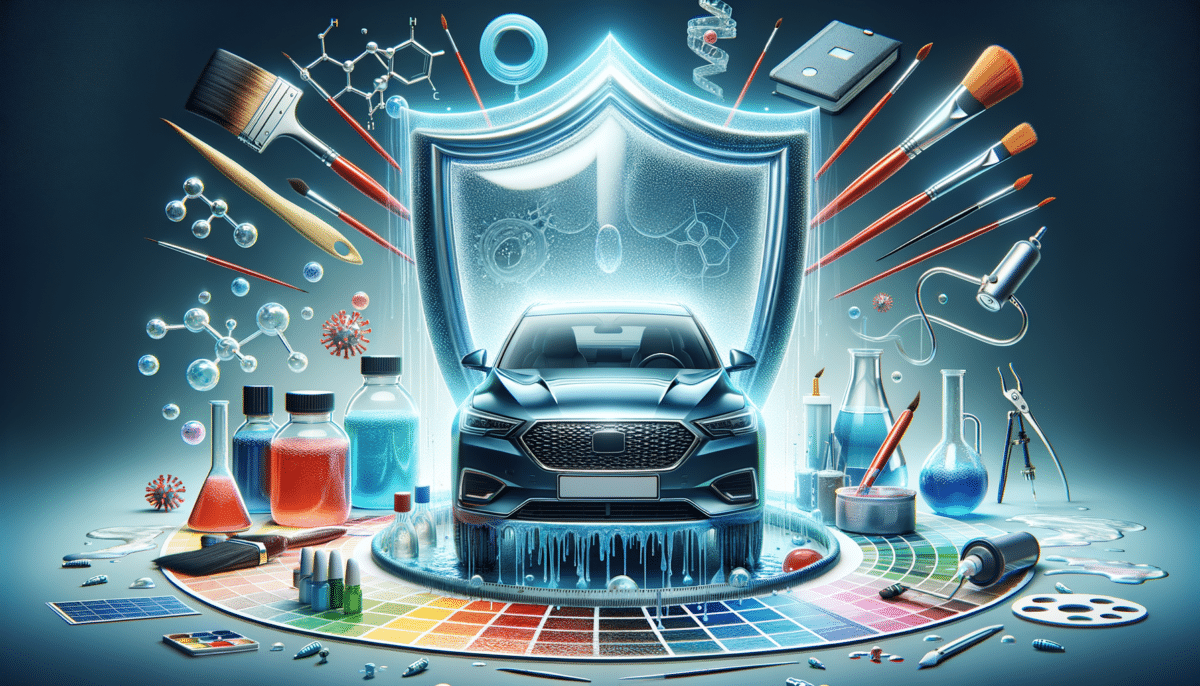Understanding Car Coatings
Car coatings have become a crucial aspect of vehicle maintenance, offering both aesthetic and protective benefits. Unlike traditional waxes, car coatings are liquid polymers applied to the exterior of vehicles, creating a permanent or semi-permanent bond with the paint. This bond forms a protective layer that shields the paint from environmental damage, such as UV rays, acid rain, and road salt.
There are several types of car coatings available, each with unique properties and benefits. Common types include ceramic coatings, nano coatings, and polymer sealants. Ceramic coatings are renowned for their durability and hydrophobic properties, which make them highly effective in repelling water and dirt. Nano coatings, on the other hand, are designed to fill microscopic imperfections in the paint, resulting in a smoother finish and enhanced gloss. Polymer sealants offer a balance between protection and ease of application, often used as an entry-level option for car enthusiasts.
Choosing the right car coating depends on various factors, including the vehicle’s usage, environmental conditions, and personal preferences. By understanding the different types of coatings and their benefits, car owners can make informed decisions that enhance their vehicle’s longevity and appearance.
The Benefits of Car Coatings
Car coatings offer a multitude of benefits that extend beyond mere aesthetics. One of the most significant advantages is the protection they provide against environmental hazards. The protective layer formed by the coating acts as a barrier against harmful UV rays, which can cause paint to fade and oxidize over time. Additionally, coatings protect against chemical stains from bird droppings, tree sap, and other contaminants that can damage the paint surface.
Another notable benefit is the ease of maintenance. Coated vehicles are much easier to clean, as the hydrophobic properties of the coating repel water and dirt. This means that grime and debris are less likely to adhere to the vehicle’s surface, reducing the frequency and effort required for washing. Moreover, car coatings can enhance the vehicle’s resale value by maintaining its appearance and minimizing wear and tear.
For car enthusiasts, the enhanced gloss and shine provided by coatings are particularly appealing. The reflective properties of the coating amplify the paint’s depth and clarity, giving the vehicle a showroom-like finish. Whether for protection, ease of maintenance, or aesthetic appeal, car coatings offer a comprehensive solution for preserving the beauty and integrity of a vehicle.
Application Process of Car Coatings
The application process of car coatings requires precision and attention to detail to achieve optimal results. Before applying the coating, the vehicle must be thoroughly cleaned and decontaminated to remove any dirt, grease, or residues. This step is crucial, as any impurities left on the surface can affect the coating’s adhesion and performance.
After cleaning, the vehicle’s paint may need to be polished to remove any scratches or imperfections. This step ensures a smooth surface for the coating to bond with, enhancing its durability and appearance. Once the paint is prepared, the coating is carefully applied using an applicator pad or spray, depending on the product. The coating must be evenly spread to avoid streaks and ensure complete coverage.
After application, the coating needs time to cure, allowing it to bond with the paint and form a durable protective layer. Curing times vary depending on the type of coating and environmental conditions, but it typically ranges from a few hours to a couple of days. During this period, it’s essential to keep the vehicle dry and away from contaminants to ensure the coating sets properly.
Comparing Car Coatings to Traditional Waxes
Car coatings and traditional waxes both aim to protect and enhance a vehicle’s appearance, but they differ significantly in terms of durability, application, and performance. Traditional waxes are made from natural or synthetic materials and provide a temporary layer of protection on the vehicle’s surface. They are known for their ease of application and ability to enhance gloss, but they typically last only a few weeks to a couple of months.
In contrast, car coatings offer long-lasting protection, often lasting several years with proper maintenance. The chemical bond formed between the coating and the paint provides superior durability against environmental hazards, making coatings a more robust option for long-term protection. Additionally, coatings require less frequent reapplication, saving time and effort in the long run.
However, the application process for coatings is more complex and requires more preparation than waxing. While waxes can be applied by hand with minimal preparation, coatings demand meticulous cleaning and surface preparation to achieve optimal results. Despite the initial effort, the long-term benefits of coatings, including enhanced protection and reduced maintenance, often outweigh the convenience of traditional waxing.
Choosing the Right Car Coating for Your Vehicle
Selecting the appropriate car coating involves considering several factors, including the vehicle’s usage, environment, and personal preferences. For daily drivers exposed to harsh weather conditions, a ceramic coating may be the ideal choice due to its durability and resistance to environmental damage. Ceramic coatings are particularly effective in protecting against UV rays, acid rain, and road salt.
For car enthusiasts seeking a high-gloss finish, nano coatings are an excellent option. Their ability to fill microscopic imperfections in the paint results in a smoother, more reflective surface that enhances the vehicle’s aesthetic appeal. Additionally, nano coatings are known for their hydrophobic properties, making them easier to clean and maintain.
Polymer sealants offer a balance between protection and ease of application, making them suitable for those new to car coatings. They provide adequate protection against environmental hazards and enhance the vehicle’s appearance without the complexity of ceramic or nano coatings. Ultimately, the choice of coating depends on the specific needs and preferences of the car owner, ensuring the vehicle remains protected and visually appealing.
